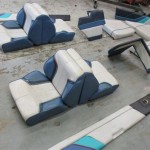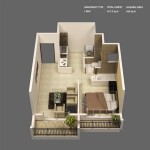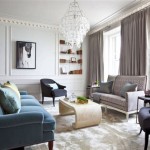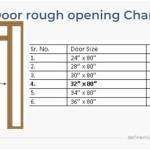Modern Rustic Interior Decorating Ideas
Modern rustic interior design blends the warmth and raw appeal of rustic elements with the clean lines and sophisticated touches of modern aesthetics. This design style creates spaces that feel both inviting and refined, offering a comfortable and stylish ambiance. Successful implementation of modern rustic design requires careful consideration of materials, textures, and color palettes to achieve the desired balance.
The essence of modern rustic design lies in juxtaposing the organic with the contemporary. Think exposed wooden beams alongside sleek metal fixtures, or a rough-hewn stone fireplace complemented by minimalist furniture. The key is to embrace imperfections and natural variations, allowing the beauty of the raw materials to shine through while maintaining a sense of order and intentionality.
Key Elements of Modern Rustic Design
Several key elements define the modern rustic style. Understanding these components is crucial for creating a cohesive and visually appealing space.
Natural Materials: The Foundation of Rustic Charm
Natural materials are the cornerstone of any rustic design, and this holds true for the modern interpretation. Wood is a prominent feature, appearing in flooring, walls, ceilings, and furniture. The type of wood used can vary, from reclaimed barn wood with its weathered patina to smoother, more refined hardwoods. Stone is another essential element, often utilized for fireplaces, accent walls, or flooring. Consider incorporating brick, concrete, or even natural fibers like jute, sisal, and wool to further enhance the rustic aesthetic.
When selecting wood, pay attention to the grain and texture. Distressed wood with knots, cracks, and imperfections adds character and authenticity. In contrast, smoother, more polished wood can create a more refined look, particularly when paired with modern furniture. Stone can be used in its natural, raw form or cut and shaped for a more tailored appearance. The choice will depend on the specific design goals and the overall aesthetic of the space.
The strategic use of natural materials helps to ground the space and create a sense of connection to the outdoors. These elements provide visual warmth and tactile interest, contributing to the overall comfort and inviting atmosphere.
Neutral Color Palette: A Backdrop for Natural Beauty
A neutral color palette serves as the foundation for modern rustic interiors, allowing the natural materials and textures to take center stage. Whites, creams, grays, and browns are the predominant colors, creating a calm and serene atmosphere. These neutral hues provide a versatile backdrop that allows for flexibility in the selection of furniture and accessories.
While neutral colors are essential, incorporating subtle pops of color can add visual interest and personality to the space. Earthy tones, such as muted greens, blues, and reds, can be used sparingly to complement the natural materials. Consider incorporating these colors through textiles, artwork, or decorative objects. The key is to maintain a sense of balance and avoid overwhelming the space with too much color.
The choice of paint colors can also influence the overall feel of the room. Matte finishes tend to enhance the rustic aesthetic, while eggshell or satin finishes can provide a more modern look. Consider using different shades of the same color to create depth and dimension within the space.
Modern Furnishings: Clean Lines and Simple Silhouettes
While rustic elements are essential, modern rustic design also incorporates contemporary furnishings with clean lines and simple silhouettes. This juxtaposition creates a visually appealing contrast between the raw and the refined. Look for furniture pieces made from natural materials, such as wood or leather, but with a modern design sensibility.
Avoid overly ornate or decorative furniture. Instead, opt for pieces with simple shapes and minimalist details. Upholstered furniture should be comfortable and inviting, with neutral-colored fabrics that complement the overall color palette. Consider incorporating accent chairs or sofas with a modern design that adds a touch of sophistication to the space.
The placement of furniture is also crucial. Arrange furniture in a way that promotes conversation and creates a comfortable and inviting atmosphere. Avoid overcrowding the space, allowing for ample room to move around. The goal is to create a functional and stylish space that is both comfortable and visually appealing.
Integrating Rustic Details into a Modern Space
Successfully integrating rustic details into a modern space requires careful planning and attention to detail. Consider the existing architecture and design of the space and identify opportunities to incorporate rustic elements in a way that complements the overall aesthetic.
Exposed Architectural Elements: Embracing the Structure
Exposed architectural elements, such as wooden beams, brick walls, or concrete floors, can add significant character and charm to a modern space. If the space already has these features, embrace them and make them a focal point of the design. If not, consider adding them to create a more rustic feel.
Exposed wooden beams can be added to the ceiling to create a dramatic and visually appealing feature. Brick walls can be left exposed or painted a neutral color to add texture and interest. Concrete floors can be polished and sealed to create a durable and stylish surface. The key is to work with the existing structure and materials to create a cohesive and harmonious design.
When exposing architectural elements, ensure they are properly cleaned and maintained. Wooden beams may need to be treated to prevent insect infestation, and brick walls may need to be sealed to prevent moisture damage. Regular maintenance will help to preserve the beauty and integrity of these features for years to come.
Rustic Lighting Fixtures: Adding Warmth and Ambiance
Lighting plays a crucial role in setting the mood and ambiance of a space. In modern rustic design, lighting fixtures should be both functional and aesthetically pleasing, incorporating rustic materials and designs.
Consider using pendant lights with metal shades or chandeliers with wooden accents. Edison bulbs can add a vintage touch and provide a warm and inviting glow. Wall sconces made from wrought iron or reclaimed wood can add subtle lighting and visual interest. The key is to choose lighting fixtures that complement the overall design and enhance the rustic aesthetic.
In addition to ambient lighting, consider incorporating task lighting and accent lighting to create a layered lighting scheme. Task lighting can be used to illuminate specific areas, such as a reading nook or a kitchen island. Accent lighting can be used to highlight artwork or architectural features. A well-designed lighting scheme can significantly enhance the overall feel and functionality of the space.
Textural Accents: Adding Visual Interest and Depth
Textural accents are essential for adding visual interest and depth to a modern rustic space. Incorporate a variety of textures through textiles, accessories, and decorative objects.
Consider using natural fibers like wool, linen, and cotton for curtains, rugs, and upholstery. Woven baskets, ceramic vases, and wooden bowls can add texture and visual interest to shelves and tabletops. Layering different textures can create a more dynamic and inviting space. For example, a chunky knit throw blanket on a leather sofa can add both warmth and visual appeal.
When selecting textural accents, pay attention to the overall color palette and design style. Choose items that complement the existing décor and enhance the rustic aesthetic. Avoid overcrowding the space with too many accessories, as this can detract from the overall design. The key is to create a balanced and harmonious space that is both stylish and comfortable.
Achieving Balance and Harmony in Modern Rustic Design
Achieving balance and harmony is essential for creating a successful modern rustic interior. This involves carefully considering the proportion, scale, and placement of each element within the space.
Balancing Rustic and Modern Elements: A Key to Success
The key to a well-executed modern rustic design is finding the right balance between rustic and modern elements. Too much rustic can make the space feel dated and cluttered, while too much modern can make it feel cold and sterile. The goal is to create a harmonious blend of both styles, where each element complements the other.
Consider using rustic elements as accents rather than the main focus of the design. For example, incorporate a few pieces of reclaimed wood furniture in a room with modern lines and neutral colors. Or, add a stone fireplace to a living room with minimalist décor. The key is to use rustic elements sparingly and strategically to create a visually appealing contrast.
Experiment with different combinations of rustic and modern elements to find the balance that works best for the space. Don't be afraid to mix and match different styles and materials to create a unique and personalized design.
Maintaining a Sense of Cohesion: Creating a Unified Design
Maintaining a sense of cohesion is essential for creating a unified and harmonious design. This involves using a consistent color palette, style, and theme throughout the space. Avoid introducing elements that clash with the overall aesthetic, as this can disrupt the flow of the design.
Choose a color palette that is primarily neutral, with subtle pops of color to add visual interest. Stick to a consistent style, whether it's minimalist modern or Scandinavian-inspired. And choose accessories and decorative objects that complement the overall theme. By maintaining a sense of cohesion, one can create a space that feels both stylish and inviting.
Consider using a mood board to help visualize the overall design and ensure that all the elements work well together. A mood board can help to identify potential problems and make adjustments before starting the actual decorating process.
Personalizing the Space: Adding Unique Touches
Personalizing the space is essential for making it feel like home. Incorporate personal touches that reflect one's individual style and preferences. This can include artwork, photographs, collectibles, or other items that have special meaning.
Display artwork that reflects one's personality and interests. Hang photographs of family and friends to create a warm and inviting atmosphere. Collectibles can be displayed on shelves or tabletops to add visual interest and personality. The key is to incorporate items that one loves and that reflect one's unique style.
Don't be afraid to experiment with different styles and materials to create a personalized space that is both stylish and comfortable. The goal is to create a space that feels like home and that reflects one's individual personality.

40 Rustic Decor Ideas Modern Style Rooms

Modern Rustic Interior Design 7 Best Tips To Create Your Flawless
:strip_icc()/cdn.cliqueinc.com__cache__posts__231321__rustic-home-decor-231321-1501637299245-image.700x0c-d425f9c6c2df482ea759571089d443a3.jpg?strip=all)
15 Modern Rustic Home Design And Décor Ideas

500 Best Modern Rustic Interiors Ideas In 2024 House Interior Design

Modern Rustic Interior Design Ideas For Your Home Cafe

Rustic Decor Style Enlighting Your Mid Century Living Room Ambience

24 Modern Rustic Decor Ideas Room Inspiration For Bedrooms Living Rooms And Kitchens

24 Best Rustic Decor Design Ideas In 2024 Home Inspiration

Take A K Inside This Stunning Modern Rustic Minnesota Home

Rustic Interior Design How To Get A No Fuss Natural Look Decorilla
Related Posts








